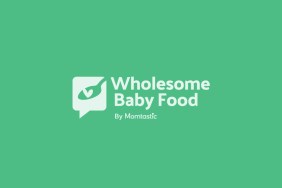Whole Grains for Baby – Feed Your Baby Whole Grains for Hearty Nutrition and Delicious Taste!
Whole Grains for Your Baby’s Diet – It is better to use whole grains for your baby’s homemade baby food.
Whole grains are quite amazing in many ways and they are the best choice for baby food. Whole grains come in a myriad of shapes, sizes, colors and tastes. They are grown all around the world and the ways to cook and prepare them are as varied as the climates and locations in which they are grown.
All whole grains contain 3 parts: The Bran, the Germ and the Endosperm.
The Bran is the outermost layer of the grain. It contains many vitamins, minerals and also fiber. Some of the nutrients are Niacin and Thiamin (B vitamins), riboflavin, iron and zinc.
The Germ is the area where new plants spring from. It too contains high levels of niacin, thiamin, iron and zinc along with vitamin E, protein and fat.
The Endosperm is the kernel of the grain. It really accounts for the bulk of the plant. While it has far fewer vitamins and minerals to offer, it does contain a higher amount of protein and carbohydrates than do the Bran or the Germ.
Whole grains are not refined so they maintain all of their nutrients in their original form. The process of refining takes out the Bran and the Germ, leaving the Endosperm. Grains that you typically find in their refined state are things such as white rice and white flour.
While the refining process strips away many nutrients, these nutrients are often added back in after the milling of the grain. Even though this addition (or “fortification”) of nutrients occurs, the end product is still a bit less nutritious than when the grain was whole. You see, there is a limited bio-availability of the “fortified” nutrient additions. An example of this is “Enriched White Rice” or an All Purpose Flour product on your grocer’s shelves.
Is it bad to feed baby enriched milled grain products?
Enriched milled grains are not “bad” for your health per se, rather, as they are stripped of the bran, you lack the fiber that is inherent in the grain. Fiber is very important in our diets and not only keeps us “regular”, it also has been known to help lower cholesterol and reduce the risks of heart disease, cancer and even diabetes.
Here are a few of the Whole Grains that you would typically introduce to your infant/toddler. You may want to consider adding whole grains into the “Adult” diet as well. (Prior to introducing any new foods to your infant, you should ensure that those foods are appropriate for the age and stage of the infant – always consult your pediatrician when in doubt.)
Brown Rice: This type of rice has not been refined thus all of its nutrients, proteins and fibers are intact. Better for you than White Rice.
Oatmeal: Oatmeal is taken from the whole oat groat. Oatmeal is naturally high in fiber and provides many vitamins (especially the B’s) and minerals as well as Iron. Try to use the plain Rolled Oats, Steel Cut Oats or the Scotch Oats. These Oats have been cut, rolled, and cooked less than the Quick Cook or the Instant. In many brands of Quick Cook and Instant, enzymes or other things have been added to the Oats.
Bulgar or Cracked Wheat: This grain is comprised of wheat kernels that have been steamed, dried and then cracked. You cook bulgar just as you would cook rice. Bulgar is a common ingredient in taboulee and resembles couscous. Couscous is a pasta made from semolina though it looks like a grain in it’s granular “crumbly” appearance.
Barley: Many of us are familiar with barely which is typically found in soups. Barley is very nutritious and also cooks like rice. Avoid using the quick-cook barley as it contains less soluble fiber or protein, than does the Hulled Barley.
Quinoa: This grain is an “ancient” grain from South America. It is a good substitute for white rice and also for white flour. It may be used as a part of a meal and also may be used in baked goods. It is high in vitamins and minerals and actually contains more minerals than other grains.
There are many other wonderful grains (and seeds that are eaten as a grain) available such as Flaxseed, Millet, and Buckwheat.



